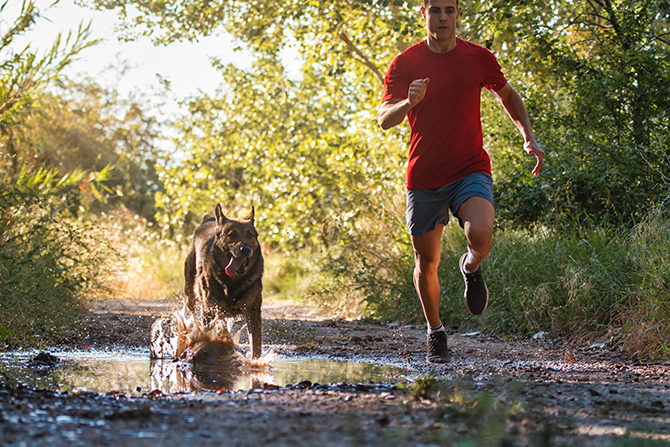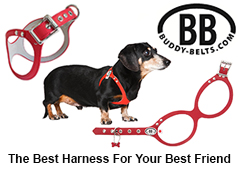WORKING OUT WITH FIDO?
TIPS TO MAKE THE MOST OF IT

Even as Summer’s heat eases, be aware of signs of overexertion in your dog. Even the toughest need a break sometimes.
By Dr. Brett Shorenstein
Pet Lifestyles sat down with Dr. Brett Shorenstein, Partner and Medical Director, Abingdon Square Veterinary Clinic to check in on how to recognize signs of overexertion in your dog. We all know that working out with your dog can be a great bonding experience. Dogs have an impressive ability to keep up with their owner’s exercise routine, however, it is important to remember that just like their owners, dogs have a limit and can suffer from overexertion.
Make sure to choose an exercise that works for your dog. For example, longer legged breeds will do better with long distance running; brachycephalic breeds should have plenty of rest, shade and water built in to exercising as they are known for overheating. Obesity, old age, and having a heavy coat are also risk factors for overheating. Some dogs like swimming, others do not. As a general rule, build up your dog’s stamina – if your dog is not used to exercising, don’t over-do it day 1. Also make sure to not force an activity such as swimming on a dog who does not like to swim.
Here is how to check for signs of over-exertion:
Examine your dog’s paws – the paw pads can be a great clue as to whether your dog is being overworked. Examine for cracked paw pads, cuts, blisters, redness. If any of these signs are noted, see your veterinarian.
Joints – joint pain is a common sign of overexertion. This is evidenced by limping. Osteoarthritis is the most common orthopedic disease in dogs. Middle-aged to senior dogs who come up lame from intense exercise may have arthritis or another orthopedic vs soft tissue injury. If the limping is pronounced, make an appointment to see your veterinarian.
Changes in behavior. If your dog normally loves to run that extra mile but all of a sudden is unwilling to run further, listen to what they are telling you – most likely the activity is too much for your dog that day.
Especially for hot, humid days, it is important to avoid overheating/heat stroke. Signs of overheating include lethargy, excessive panting, collapse, change in tongue or gum color, abnormal mentation, vomiting.
Treating a dog for overheating or heat stroke should be guided by your veterinarian. If you are concerned that your dog may be hypterhermic, call your veterinarian or local emergency veterinarian immediately for advice.
Abingdon Square Veterinary Clinic is located at 130 West 10th Street, New York City 10014. For appointments, call (212) 242-9169.














